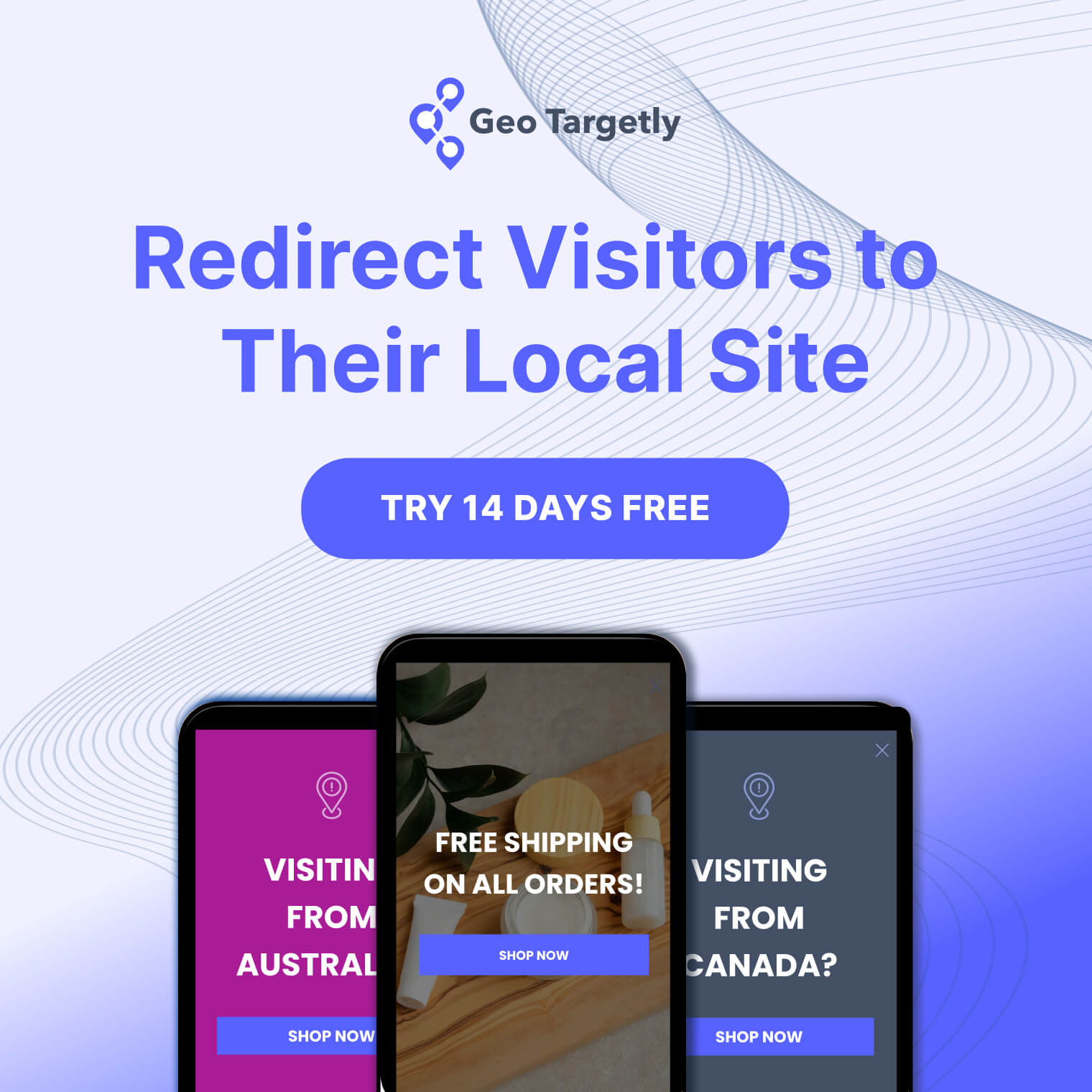

Within the last decade, Google has started to place greater importance on personalisation, realising that it leads to better conversion rates and user experience. As such, optimising your website to be more personalised is crucial - regardless of the industry you operate in - if it aims to shine through the clutter and succeed in the current digital landscape. Optimising for personalisation is a data-driven task; it’s impossible to know what your users want without having an intelligent resource to base your assumptions on. Moreover, while most aspects of a website like text and visuals are easily customisable, how can you tailor it for user traffic that has the potential to be so diverse. Users could be accessing the site via mobile or desktop; they could be from either side of the Atlantic, equipped with their own set of cultural and linguistic expectations; they could have reached your site organically or been targeted by a paid promotion - the possibilities are endless. A geotargeting platform can offer a pertinent solution for this conundrum, allowing your website to be customised individually for each user, based on their geolocation.
The task then, is to differentiate between these various platforms and decide which best suits your business. We’ve detailed a bit on what each geotargeting platform is and what its applications are, hopefully making your job easier.

Keeping it simple with IP based redirection
Perhaps the most simple geotargeting platform available, IP redirection basically redirects users based on their geolocation. Most redirection tools are able to redirect via user country, state and even city. This allows you to send users, either automatically or through an opt-in, to an internal landing page or an external domain that is relevant to their location.
IP redirection is a geotargeting platform that also targets search engine crawlers as well. Google itself has stated that it’s important to treat their crawlers as you would any regular visitor. It’s no surprise then that pretty much every business with a global presence opts to use it - it simultaneously improves user experience while improving your website’s SEO.
Expanding with subdomains and subfolders
Assuming your business has a generic top-level domain (‘.com’ or ‘.org’ for example) and you operate within multiple geographical locations, Google recommends that you use subdomains or subfolders for specific countries and languages. For example, say your business has a presence in India, then ‘.com/in/’ should be present as a country-specific subdomain. Now, if a person in India searches for your business on Google, this is the result that will be displayed. This can have its own benefits and drawbacks, depending on the nature of your business.
For global companies, this geotargeting platform can serve as an option to rank better in local SEO. However, it is a greater challenge to get set-up - especially compared to IP redirection, and it can lead to a disparity between your local and international branding efforts. On the other hand, if running a large number of region-specific campaigns is common for your organisation, this might be an option to consider.
Utilising geo-specific display ads and popups
A geolocation based PPC campaign is relatively simple to set-up and launch, and with the right combination of location and languages, it can be quite effective as well. Whether it’s implemented on your own site or on external ones, showing location relevant offers can be an excellent way to drive user conversion and ramp up engagement.
But there’s no reason to restrict this geotargeting platform strictly to offers either. Popup display ads - especially when localised - can be an excellent source of lead generation, expanding on your regional information resources. It can also be an excellent method to prompt users to visit a local or region-specific site without automatically redirecting them, as well as serving up the latest location-specific headline regarding your business.
Geo content can serve as a dynamic geotargeting platform
Showcasing content to users that is specific to their location can be an excellent method to build trust and get them to engage with you. This can range from displaying local contact numbers and store locations, to page headings and CTAs dressed in local languages and colloquialisms.
This geolocation platform is also able to block away content that isn’t relevant to a specific locale. After all, why would a customer in the UK want to know about a sale happening at your store in Melbourne? Thereby, this ensures that your users are seeing only what’s applicable to them, increasing chances of conversion and netting better ROI for your display ads and lead-gens.
Google’s crawlers are also on the lookout for Geo specific content and lend more authority to sites which utilise it, resulting in better SEO results for your business, especially in the local context.
All in all, IP based geolocation provides an array of interesting geotargeting platforms that you can utilise to better engage with your consumer base, providing a better user experience which in turn leads to a greater conversion rate. While each platform has its own merits, some can be far more useful depending on the nature and goals of your business. With the right tools in your arsenal, your business could well be on the way to pleasing both your customers and those Google search bots that are crawling around your site.




.webp)


































